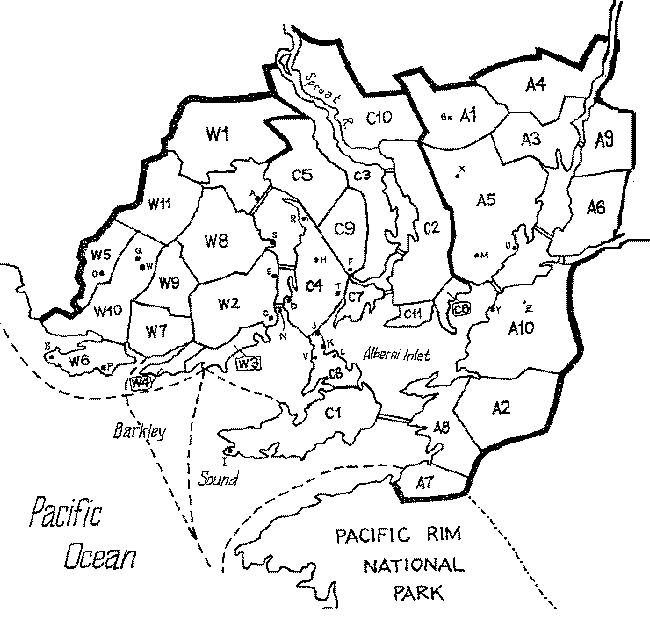The city of New London is situated on the western shore of Vancouver Island, straddling Barkley Sound and the Alberni Inlet. Within the confines of the province of British Columbia, the city has gained more fame and recognition that the province's capital of Victoria, another island city on the eastern shore facing the Canadian mainland. The area was discovered by the famed British explorer Captain James Cook, when he visited the island in 1778, and was settled soon thereafter. In order to ensure the area remained under British control in the face of American expansionism, Fort Cook was built in 1803 in the district of present day Cookston. Other settlements in the region were at Elizabethtown (across St. George's Bay from Fort Cook), and St. George and South Alberni (near the top of the Alberni Inlet).
Settlers didn't arrive in large numbers until the Vancouver Island colony became part of British Columbia in 1866. By this time, Fort Cook had been renamed Cookston and the growth in the other three townships was such that in 1898, the towns agreed to amalgamate, forming the City of New London. The approach of the 20th century brought a frontier spirit to the logging towns and the Yukon Gold Rush of 1898 brought a wide array of people. Additionally, the beauty and prosperity of the era kept many of the settlers in the region, causing them to plant firm roots in the fledgling city. By the time World War I broke out in 1914, New London was the third most important city in British Columbia, behind Vancouver and Victoria.
Rapid expansion during the post war years and the ease through which the logging and fishing community survived the Depression contributed to the remarkable boom in the 1950's which has led the city of New London to its current status as the province's second largest city. Today, nearly one million people enjoy a mild year-round climate, breath taking scenery, and the resources of the surrounding mountains. However, the pace of expansion has led to the problems of pollution from the pulp and paper industry, and the segregation of people into cultural districts which has placed stress on the relations of the citizens of New London. New London's proximity to the Pacific trading corridor has brought a great amount of international trade and a booming fishing industry. The City's natural beauty and prospering business community will ensure that New London will remain a vibrant and growing city for years to come.
New London has attracted the attention of several major businesses worldwide. The city holds the corporate headquarters for the Seventh Heaven Corporation, Scott Industries and Reach Inc., three multi-million dollar companies who employ nearly one eighth of the city's population. The New London International Airport caters to the city's tourist trade and brings in new residents. The city has been steadily growing at a rate of approximately seven thousand residents per year, a number that is not expected to drop before the 21st Century.

The City of New London was originally conceived by Troy Desrosiers, and was later added to by Clayton Crawshaw, Caran Rainey, Jason Wright, Mike Auger and Cheryl Sheppard.